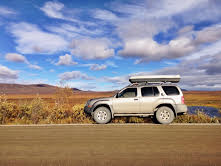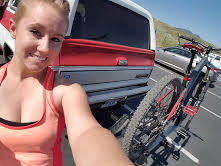 Are you looking for a new car? Maybe a new adventure wagon, something sweet that you can use to get to the ski slopes, pull your boat, get you to the trailhead, take on your next vacation? Let me give you some advice on choosing your new vehicle!
Are you looking for a new car? Maybe a new adventure wagon, something sweet that you can use to get to the ski slopes, pull your boat, get you to the trailhead, take on your next vacation? Let me give you some advice on choosing your new vehicle!
Don’t do it. That’s my advice. Okay, that was a trick, wasn’t it? But so often we discard our older vehicles in favor of some shiny new piece of metal that has all of the bells and whistles that we just can’t live without when the one we have still has a lot of life in it. There is a common train of thought that when a vehicle gets more than 100,000 miles it is just about worn out. These ideas are not only outdated, but can be very expensive.
How many miles can you get on a vehicle? Probably a lot more than you think. Cars are expensive, they often come with a monthly payment, and they lose value quickly. If you really want to get control of your budget, driving a car as long as possible is a good place to start. Learning to be happy with what we have, or being happy with something sufficient even if not new, can save a ton of money. How much faster could you pay off your debt if you didn’t have to fork over anywhere from $400-800 every month for a car payment? Where could you go and what experiences could you have with that much extra money?
So to debunk the myth that a car is worn out with 100,000 miles on it, let me share with you some true stories of vehicles that are still running strong with many more miles on them than that. First of all, let’s talk about my trusty 2003 Chevy Suburban, aka the Mom Wagon.

Pulling the boat out of the Snake River
This vehicle can carry several people, always has a load of fishing equipment in the cargo space, pulls our boat easily, and has 4 wheel drive. We bought it new with 43 miles on it, and it recently hit 351,000 miles. I’ve driven it for so many years that it now carries so much sentimental value that I would have a hard time parting with it. When we bought it our kids were younger and it was super handy for keeping all 4 of them separate enough that they weren’t in each others spaces on long road trips. We’ve hauled friends, hockey bags, suitcases, camping and fishing supplies, bicycles, sewing machines, groceries, and lumber in it.

We still use it to pull the boat to the river, and to go on short and long road trips. It’s been on family vacations, game weekends, camping and fishing trips, business trips, weddings, and funerals. I can’t even tell you the emotions and memories that are wrapped up in that one vehicle.
This rig has paid for itself many times over, and for several years it has cost me only maintenance and minor repair expenses. I typically average under $1,000 per year keeping it going, but we do make sure it is well maintained. And I plan to keep driving it as long as possible. It isn’t new, it doesn’t have heated seats or a backup camera or wi-fi, and I now make sure to keep my AAA membership current just in case. But it still fits my needs so perfectly that I have no excuse to trade it for something newer. And the well worn in seats are ridiculously comfortable.
If I had traded it when it hit 100,000 miles, on something that I had to make payments on and kept that cycle going, assuming a $700/month payment for 10 years, it would have cost me $84,000. Spending $1,000 per year for 10 years instead saved me $74,000! That doesn’t count the interest we have earned on that money saved either. Imagine paying that amount of money toward your home mortgage instead of on a car.
So just to show that my car isn’t an anomaly, let me introduce you to a few friends who also have a well loved vehicle that is still getting them where they need to go.
Taryn, of http://www.happiestoutdoors.ca drives a 2004 Nissan Xterra with 112,000 miles on it. She bought it new off the lot, and has since taken it from her home in BC through every Canadian province and through most western states. She says she has taken it on “extended road trips across Canada, to Utah, down the West Coast to California and to Alaska”.

The Adventure Mobile
She also adds that it has plenty of room for 5 adults and overnight backpacking gear, along with 4 wheel drive. Taryn also has a sentimental attachment to this car as it reminds her that “every backpacking trip, day hike, road trip or weekend away started with loading things into the truck”. It has become part of her family as much as mine is a part of our family. The call it The Truck, but think of it as the Adventure Mobile, and have no plans to drive anything different in the near future.
Teara, of http://www.thepipsqueakchronicles.com had a 1990 Chevy Blazer K5 that she bought used.

It had 186,000 miles on it, and she took it to Delta, Park City, and Moab, Utah, through Nevada, Oregon and California, and on all of her mountain biking adventures around Salt Lake City, Utah. What I love is that she says it was her dream car, and it was old and beaten so she didn’t have to be careful with it. This sounds like a perfect adventure vehicle to me. She called it Franklin, and drove it until she needed something that she could pull her trailer long distances with, otherwise she would have “ran that thing into the ground”.

Franklin
Hatie, of http://www.whoamag.co/ has a different perspective on vehicles because she lives in Chicago and doesn’t need a vehicle for her daily life. But she uses her mom’s 1998 Honda CRV with around 300,000 miles on it for adventuring. She takes it annually to northern Minnesota, used it to move to college in 2009, and says that it has since been to every Midwestern state. She adds, “It was even stolen once, I couldn’t tell you where it went those couple days!” She loves its reliability, and I think she even has an affinity for its “goofy flame type details”. It doesn’t have an official name but she refers to it as a “sturdy bitch or sturdy bastard”, so I’d say she’s bonded with it as if it were her own.
These are all examples of vehicles that are loved because they get us where we need to be, with the gear that we need to have a great time. This doesn’t require that the ride is new or has GPS, most of our phones do, and for places with no cell service they still make paper maps like they used in the old days. It doesn’t need leather seats, or heated seats; I bought a heated seat pad for mine for about $30. It doesn’t require wi-fi (again, smart phones). What it does require is dependability, safety, and enough space to haul our families and our gear. So before you buy a new vehicle, look at the one you have with fresh eyes. Be sure to stick to a regular, “severe use” maintenance schedule, and take care of it as if you are going to drive it forever.
Think about the money you would spend on something new and the adventures you could go on with that money instead. If you do decide you need something different, take advantage of the fact that there are lots of people getting rid of perfectly good used vehicles that have many more years of use left in them. Let someone else take the hit on the new price and the drop in value. Look diligently and be patient and you will find a gently used and well maintained rig that you can use to get you to the mountains and back for many more years to come.

The Mom Wagon








 Are you looking for a new car? Maybe a new adventure wagon, something sweet that you can use to get to the ski slopes, pull your boat, get you to the trailhead, take on your next vacation? Let me give you some advice on choosing your new vehicle!
Are you looking for a new car? Maybe a new adventure wagon, something sweet that you can use to get to the ski slopes, pull your boat, get you to the trailhead, take on your next vacation? Let me give you some advice on choosing your new vehicle!












 That way you can take the money you are paying on student loans, credit cards, cars, etc. and put it toward your mortgage too. Being mortgage free puts a lot of extra cash in your hands every month.
That way you can take the money you are paying on student loans, credit cards, cars, etc. and put it toward your mortgage too. Being mortgage free puts a lot of extra cash in your hands every month. Plan this into your budget so that they are paid for in advance, an adventure isn’t nearly as much fun if you are charging it on a credit card.
Plan this into your budget so that they are paid for in advance, an adventure isn’t nearly as much fun if you are charging it on a credit card.







